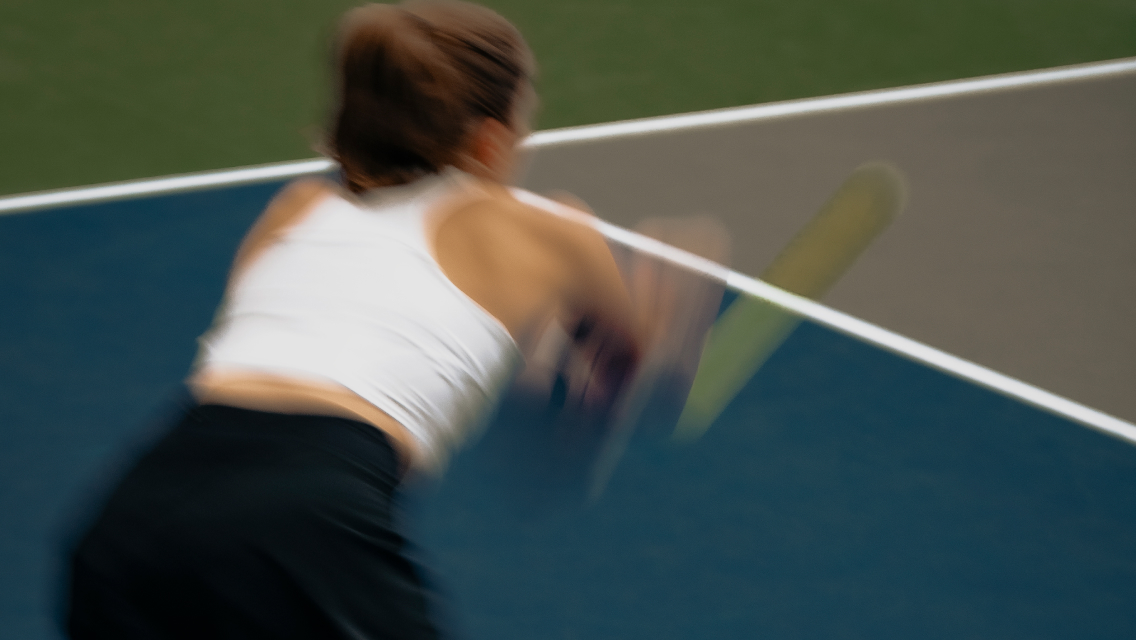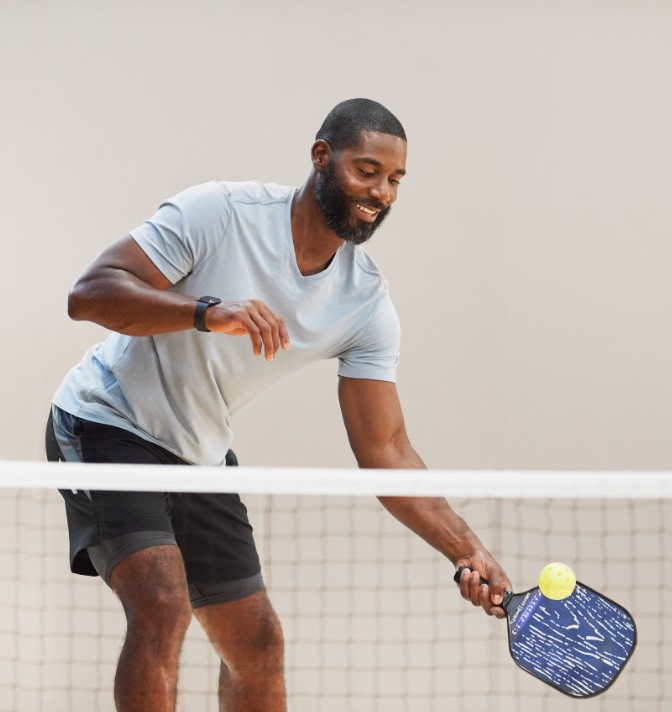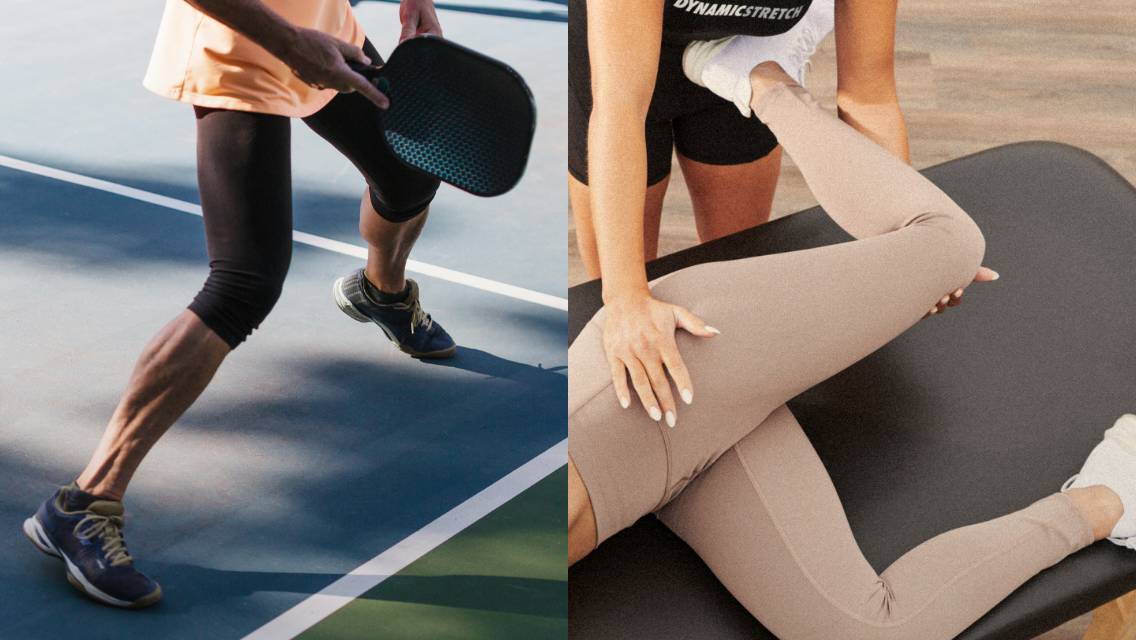If you’ve ever played pickleball, you know there is a lot of movement: You’re lunging, you’re reaching, you’re twisting — and that’s in addition to the strength and speed you need to move around the court. Just as your body needs time to recover so it can rebuild and grow after a strength or cardio session, the same is true following a game of pickleball.
Proper recovery is essential for staying mobile and agile, and for helping you ward off injury. “Pickleball can deliver such endorphins — no one wants to crowd that feeling with body pain or tight or sore muscles,” says Bob Dunn, pickleball lead at Life Time in Rochester Hills, Mich. “I always recommend players prioritize time to warm up before a game and that they include core, aerobic, and targeted muscle training in their exercise regimen. I would also encourage any player to prioritize intentional recovery post-play.”
Here, Dunn offers his top recovery resources for pickleball players.
Hydration
When we workout, we typically sweat, which is our body’s way of regulating its temperature. Controlled by the autonomic nervous system, sweating occurs when our sweat glands draw interstitial fluid to the skin; that evaporation on the skin cools the body.
A downside of the process of perspiration, however, is that it draws fluid from the tissues that are in need of repair post-workout. Those fluids need to be replenished, and it can take the body one to two days to rebalance hydration levels.
Pickleball may seem more like fun than exercise, but it’s a vigorous activity, so it’s vital to consistently hydrate before, during, and after your time on the court.
The Sauna and Steam Room
Because of pickleball’s repetitive nature, it can put strain on muscles, causing lactic acid or toxins to build up. And as muscles cool down post-activity, they tend to contract, which reduces blood flow through the muscles and fluid flow in the surrounding tissue.
Heat therapies, such as those provided in saunas and steam rooms, can help relax muscles and encourage improved blood flow within muscles and tissues.
Heat also causes the body to engage its cooling mechanisms, which pumps sweat (along with waste and toxins) to the skin to be excreted. Again, it is important to hydrate so you’re replacing the water that’s lost to perspiration.
Foam Rolling, Percussive Massage, and Compression Massage
Applying pressure or compression to your muscles helps release tension and increase blood flow — and these types of recovery, in particular, allow you to target specific muscles. For instance, pickleball players may want to foam roll their iliotibial (IT) band to release tension between the knees and hips; they may also target their hamstrings and glutes with a foam roller or massage device to keep them loose.
Foam rolling involves applying pressure to the tissues around the muscles, resulting in increased circulation and more oxygen and water being delivered to muscles. Percussive devices are designed to massage away tension by loosening muscle knots and targeting fatigue (the sense of a muscle feeling tired) and stiffness. Targeting the muscle with a massager prompts blood to flow through that area.
Compression devices are inflatable cuffs or boots that are slipped over your legs, feet, or arms and are connected to a pump; they inflate and squeeze through a series of zones to massage your limbs and help increase blood flow.
Massage
Massage is an often-seeked modality for relief from muscle soreness, pain, tension, and stress. A skilled massage therapist understands the interconnectedness of the muscular system and can the target areas in need of attention to deliver those benefits. For pickleball players, manual massage targeting the back and shoulders specifically can be helpful.
Muscle Scraping and Cupping
Dunn advises that both muscle scraping and cupping can be helpful treatments for “tennis elbow,” a condition that can affect anyone who performs repetitive grip-intensive activities, including playing pickleball.
Muscle scraping involves moving a smooth tool across muscle fibers to remove adhesions and promote bloodflow. Gua sha is one form of this.
Cupping is a massage and bodywork practice in which small, heated cups are applied to the skin, creating suction that encourages blood flow to the area.
For support of tennis elbow, in particular, scraping the forearm muscles just below the elbow can help relieve stress on the tendon where they connect and reduce inflammation. Cupping can draw fluid to the area of the elbow joint where fluid flow is restricted.
These treatments are both applied at the point of injury and can be performed separately, but they can also be effective when done together. A trained massage therapist can identify the proper treatment method and point of application.
Stretching
Flexibility and mobility, two benefits of regular stretching, are necessary for the types of multiplanar movements in pickleball, as well as for avoiding strain and injury in any form of physical activity. Stretching can also be effective for opposing muscle contraction and promoting fluid flow.
Dunn recommends pickleball players spend five to 10 minutes stretching their leg, back, and shoulder muscles. It’s common for calves and hamstrings to noticeably tighten due to play; tightness in the quads, glutes, and hips may not be as noticeable but could present as lower-back pain. Post-game shoulder stretching can also help you maintain mobility.
Learn more: “5 Stretches to Help Your Pickleball Game”
Dunn also encourages players to consider assisted stretching, which can be more effective than stretching on your own. In these Dynamic Stretch sessions (an offering for Life Time members), a stretch specialist works one-on-one with you to target tight areas or perform stretches you’re not able to do unassisted.
Cold Plunging
Cold therapy causes vasoconstriction, or the shrinking of blood vessels. The body’s response to this to prioritizing blood flow in your core area; fresh blood full of nutrients and oxygen are delivered to key organs and the brain.
When you warm up from cold exposure, it promotes vasodilation, which is the enlarging of blood vessels. All of this circulatory movement helps restore cells and aid in recovery.
Playing pickleball works your entire body, with an emphasis on your legs, core, and shoulders. It also thoroughly engages stabilizer muscles from the toes to the nose. Cold plunging — immersing your body in cold water that’s around 45 to 60 degrees F for at least one minute — triggers the body to accelerate the healing process to all of those muscles and joints.





